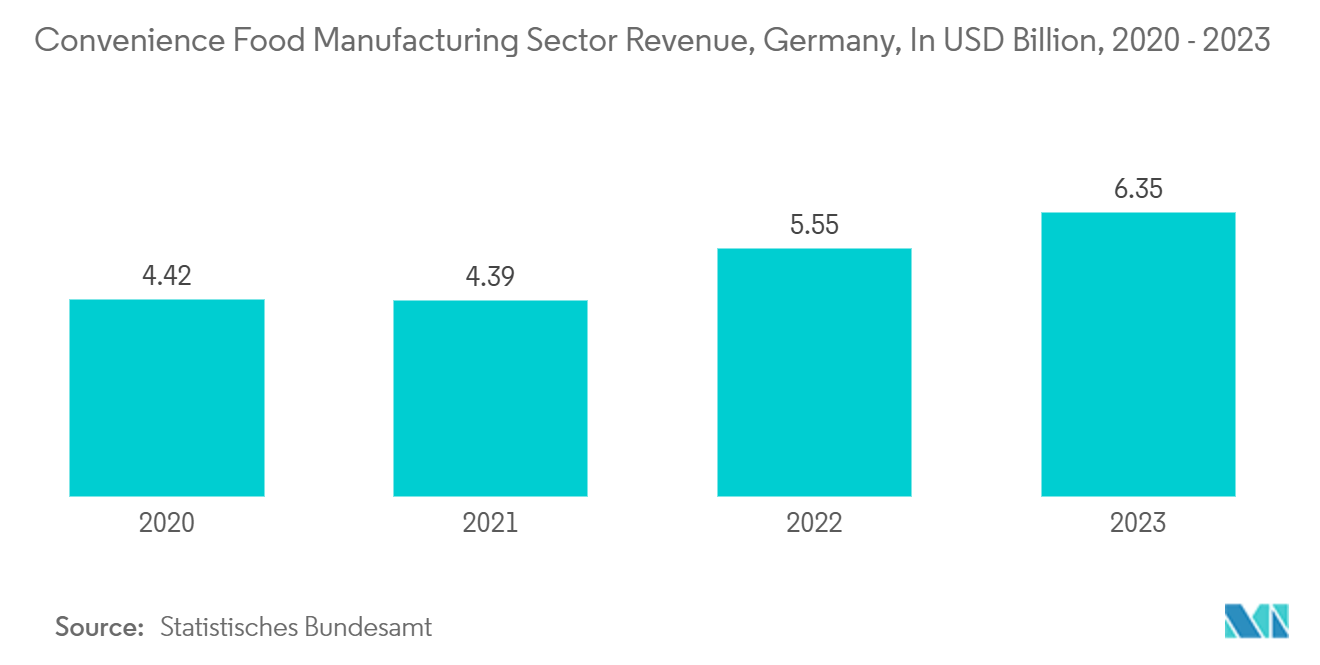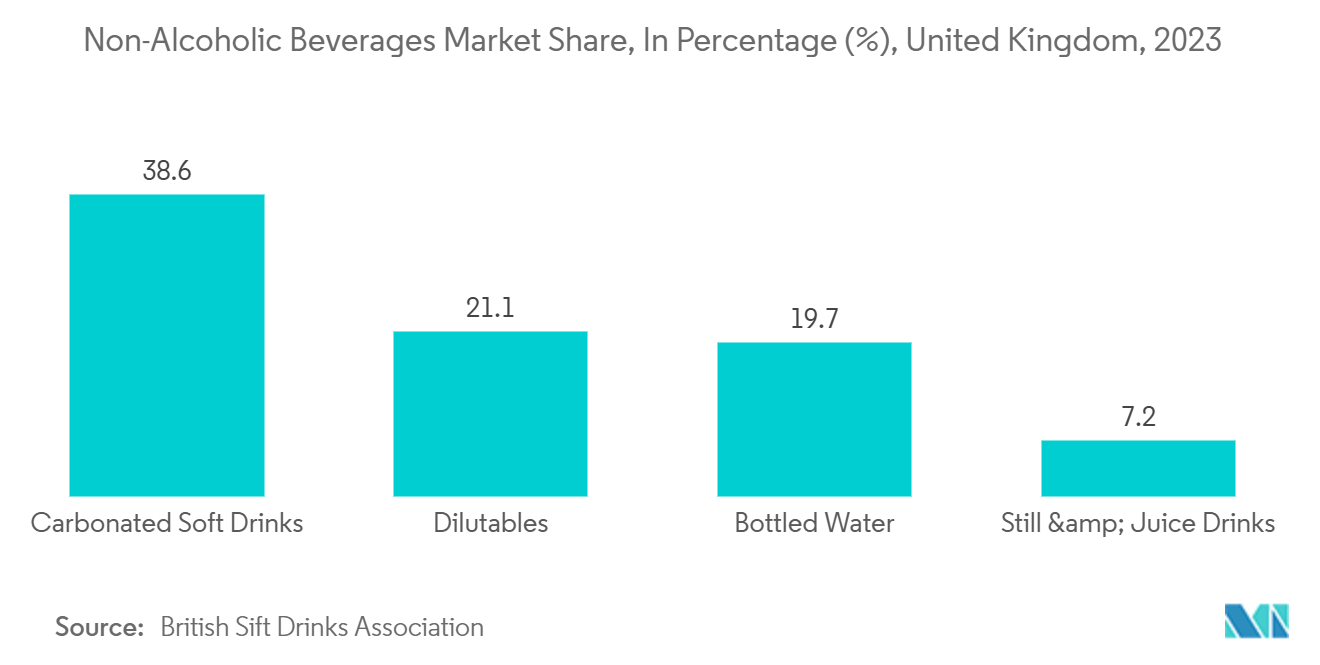Market Trends of EMEA Corrugated Board Packaging Industry
The Processed Foods Segment is Expected to Occupy a Significant Market Share
- The need for convenience foods is anticipated to grow owing to the busy lifestyles in EMEA. Processed food can be cooked in less time, which attracts consumers. The growing population is anticipated to drive the need for processed food, which is convenient and healthy. Additionally, the increasing realization among users regarding the practice of environment-friendly products is expected to drive the demand for corrugated board packaging in the region.
- Government drives to stimulate eco-friendly packaging materials, coupled with the efforts of the Corrugated Packaging Alliance, a corrugated industry initiative to strengthen corrugated packaging, provide an added stimulus to this market's growth.
- According to Statistisches Bundesamt, the German convenience food production business earned USD 6.35 billion in revenue in 2022, which increased to USD 6.35 billion in 2023. The convenience food industry significantly relies on packaging options to guarantee its products' protection and safe transit. As the convenience food production industry in Germany develops, the demand for corrugated board packaging to satisfy these needs will rise.
- Strict legislation banning single-use plastics has intensified the demand for green packaging materials, especially paper-based solutions. The rising popularity of e-commerce platforms in the region further drives market demand. E-commerce has significantly transformed the retail landscape. Key drivers fueling e-commerce's expansion in the Middle East, particularly in the Gulf region, include robust per capita income, advanced transportation and logistics networks, rising internet penetration, and technological advancements.
- The rising appetite for packaged food is increasing the demand for corrugated board packaging. According to Interpack (a packaging trade fair), the Middle East consumes 5% of the world's packaged goods, and its business is rapidly growing. Projections indicate a 21% surge in demand, reaching 44 million tons by 2026. Saudi Arabia, holding just under a 30% share, tops the Middle East in packaged food consumption. Additionally, as more single households lean toward takeaway and delivery services, the reshaped foodservice industry is expected to further propel the growth of the market.

The Beverage Segment is Expected to Hold a Significant Share
- The beverage industry plays an essential role in EMEA. The principal determinants driving the growth of the beverage segment include a steadily growing population, per capita revenue, and improving lifestyles. Due to economic constraints, some brand owners must simplify their pricey packaging. Secondary packaging is a good substitute, and corrugated boxes are among the affordable packaging options.
- As vendors prioritize sustainability, traditional rigid packaging solutions give way to more eco-friendly corrugated board packaging. With the rising demand for customer-centric products and superior product protection, liquid packaging is emerging as a viable and economical choice. This category includes corrugated boards in various sizes and thicknesses tailored to the required protection level.
- The government's activities are anticipated to increase consumer interest in the alcoholic beverage market. According to Krones AG, a German packaging and bottling machine manufacturer, consumption of packaged beverages in Middle East and Africa is expected to increase to 127.1 billion liters by 2024 from nearly 118 billion liters in 2021.
- Brands strategically employ corrugated packaging solutions to differentiate themselves, utilizing various fluting options, thicknesses, and designs tailored to their needs. With a range of customizable printing options, end users can ensure their packages are eye-catching on shelves, driving sales growth.
- The growing demand for milk-based products is boosting market growth as they are packaged in liquid beverage corrugated milk carton boxes. According to the British Soft Drinks Association, in terms of non-alcoholic beverages in the United Kingdom in 2023, carbonated soft drinks took the top position with 38.6%, followed by dilutables, bottled water, and other drinks.


